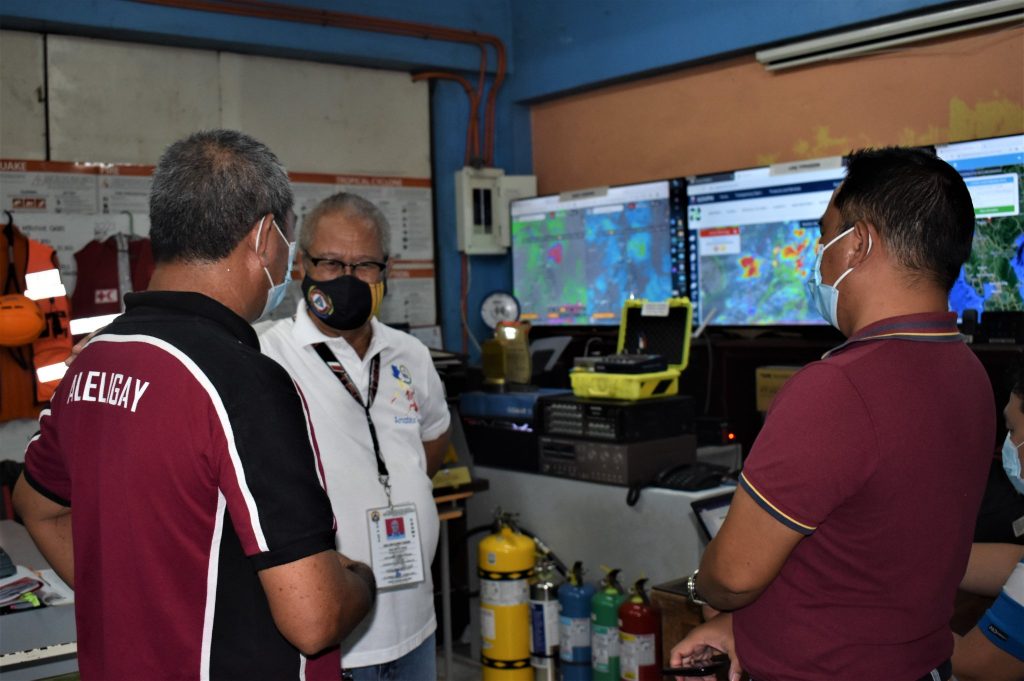Organization
Capiz State University
Best Practice Focus Area/s
Leadership, Strategy, Operations
Year Implemented
2017
This is a GBPR entry
Summary
CapSU DRRM’s accomplishments are all notable contributions to the national effort to build a safer, climate change-adaptive, and disaster-resilient Philippines worthy of emulation by our people. Project DREAM is a successful project that fosters close collaboration and partnership among the Capiz provincial government, other provincial DRRM council member-agencies and community stakeholders, thereby ensuring knowledge and skill on disaster risk reduction, climate change adaptation, and environmental conservation are shared to the communities. It won the National 19th Gawad Kalasag (3rd Place), 20th Gawad Kalasag (1st Place), and 21st Gawad Kalasag (1st Place) for the Higher Education Institution (HEI) Category for its outstanding exhibition of the development and improvement of disaster risk reduction and humanitarian assistance programs.
Background and Problem
The Province of Capiz is prone to natural and human-induced hazards and has always endured the hardships of a hostile physical environment. It has continually sought survival against typhoons, floods, and other calamities. The destructive capacity in the province can be enormous, and the problem is made more difficult by the absence of proper Information, Education, Communications (IEC), and Early Warning System (EWS). Capiz frequently receives heavy rainfalls throughout its 16 municipalities, which is why the province is frequently flooded. It is exposed to typhoons and storm surges that commonly devastate the central plains and shorelines. Unpredictable continuous rain and the province’s proximity to the West Panay Faults are a constant challenge. These are the challenges that compelled the University to take action and implement Project DREAM, bringing the disaster awareness services closer to people, especially to the underprivileged, indigenous, and geographically-isolated communities.

Solution and Impact
Capiz State University embraces the implementation of RA 10121. The university’s Disaster Risk Reduction and Management (DRRM) team organized Project Disaster, Resilient, Empowered, Adaptive Mitigation, Mitigation (Project DREAM), a brainchild of CapSU leadership. It is a remarkable program that has become a focal point of the University’s activities, focusing on preparedness and timely response. Disaster Risk Reduction and Climate Adaptation (DRR-CCA) has become CapSU’s way of life.
- Creation of Disaster Management Advisory Council (DMAC)
- Creation of Disaster Management Response Committees (DMRC)
- Building the competency of the created structures through training, workshops, and seminars
- Complementing the competency by procurement of the needed equipment for training and response
- Institutionalizing the Disaster Risk Reduction Management policies
- Partnering with Public Safety Agencies, non-government organizations, and other stakeholders
Understanding the DRRM Action and Strategy: Bringing the DRRM Program to the public and private schools, agencies, and establishments and more specifically to the less privileged communities through a grassroots approach that uses the vernacular. Bringing the DRRM Program to the Indigenous People (IP) and Geographically-Isolated Disadvantaged Areas (GIDA) by enhancing their indigenous skills and knowledge about disaster resilience and climate change adaptability.
Investing in the existing local knowledge by capacitating and empowering them through DRRM mentoring on various aspects such as disaster resilience, climate change adaptability, and environmental conservation. Guiding and evaluating the course of action and response before, during, and after an event, incident, crisis, or disaster by identifying the gaps. The DRRM Orientations, Seminars, Training, Drills, and Simulation Exercises are conducted by appropriate partner agencies and evaluated by technical experts from the LGU/ PDRRMO, CDRRMO, MDRRMOs, and other partners from Public Safety Agencies.
To date, one of the best results of the implementation of Project DREAM is the change of attitude of the people-–from passive and reactive to proactive—towards safety and survival. Capiznons today are more aware of the hazards within their immediate surroundings. With the relentless effort and continuous IEC campaigns, drills, and simulation exercises undertaken through the project, the communities are becoming more disaster-risk resilient and climate change-adaptive. With the empowerment of local DRRMCs, more communities availed of the much-needed IECs and training and were supplemented with equipment.
Milestones/Next Steps
In 2017, CapSU implemented an effective public education program on DRRM and preparedness that secured the university community’s commitment toward emergency preparedness, as evidenced by the proper execution of emergency drills and the presence of capable response teams composed of students and faculty volunteers in each campus. In 2018, Project DREAM was enhanced by promoting the Inclusive Disaster Risk Reduction Management, Cultural Sensitiveness, Gender and Development, Equipage Upgrading and DRRM Mentoring to the Grassroots Level.
